Root celery - growing and care in the open field: when to plant seedlings and how to properly care
So, you have successfully grown celery root seedlings, which means it's time to plant plants in the garden.
Next, you will find out when you can plant celery seedlings in open ground and how to properly care for it, what are the important nuances and subtleties of crop care that will help you grow a rich root crop.
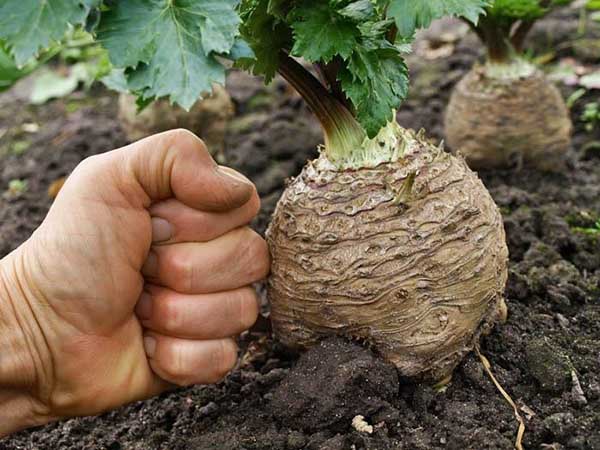
Content
When and how to plant celery seedlings in open ground
As for the approximate dates, for example, in the Middle lane, celery is planted in May (as a rule, on May holidays), when the soil warms up enough (up to + 10-12 degrees).
Root celery seedlings will be ready for planting in open ground when the plants have reached a height of 10-15 cm and have formed at least 5-7 true leaves.
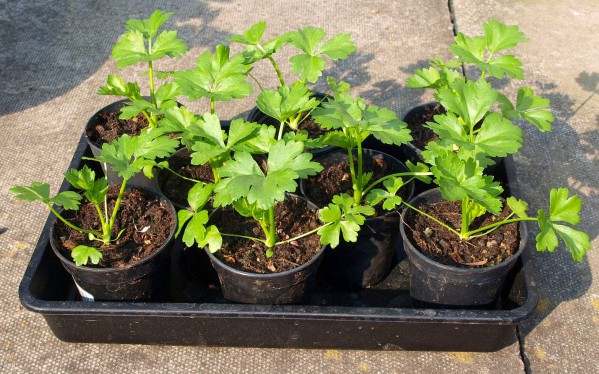
Advice! If the threat of recurrent frosts persists, then cover the seedlings for the first time with a covering material (spunbond), i.e. make an arc greenhouse.
Important! If the temperature drops below +10 degrees, then root celery can bloom and the root crop ultimately does not form.
Soil and bed preparation
Root celery is a root vegetable, which means that for normal growth and development it requires light and loose soil... In heavy (clay) soil, root crops will grow poorly and bend.
As for the choice of a place on the site, everything is standard here: for a root crop it is important abundant sunshine.
The best predecessors for celery are any crops not from the umbrella family to which it belongs. Those. celery should not be planted after carrots, parsley, dill, parsnips and etc.
As always, it is advisable to prepare a bed for celery in the fallby introducing organic matter into it (compost or humus - 4-8 kg, depending on the initial fertility of your soil) and phosphorus-potassium fertilizers (for example, potassium sulfate and superphosphate). And in the spring, a couple of weeks before planting seedlings, add nitrogen fertilizers (urea or ammonium nitrate).
If you are used to preparing the beds in the spring, then you can simply add organic matter (compost, humus) for digging and add complex mineral fertilizer (nitroammofoska).
Direct planting of seedlings
Immediately before planting in the holes, you need to pour 1 tsp. superphosphate, then gently mix with the soil and add some water to the holes.
- First you need to make holes by choosing the correct landing pattern.
Root celery should be planted at a distance of at least 25-30 cm from each other, and preferably even 35-40 cm.
- If you have not previously filled the beds with fertile soil and fertilized, then you can do this now. Namely, pour humus and wood ash into the holes, and then thoroughly mix with the garden soil.
- Next, you need to get the seedlings out of the cups and plant them in the holes (to the same depth as before the plants grew in seedling cups, i.e. to the cotyledons). Gently squeeze the sides with soil.
Important! In no case should the celery root be buried excessively in the ground.
In the future, on the contrary, you will shovel the earth from it.
- Water abundantly.
Or you can act like the author of the video. Namely, to land in the mud, i.e. first shed the holes, and then plant the seedlings in them.
Video: planting seedlings in open ground
How to care for celery outdoors: growing secrets
Further care of root celery after planting in open ground is reduced to the following simple agrotechnical measures.
The main features (subtleties) of celery care are a necessity loosening, breaking off the lower leaves and trimming the side roots.
Watering
Root celery, like any root vegetable, loves moisture, so you will need to provide it with regular watering (you can directly at the root). In no way should the root crop be allowed to end up in dry ground. Always water abundantly. If you water it often and little by little, the root crop will develop too many superficial roots (it will be bearded).
Advice! To water less often, loosen and control weeds, you can mulch the beds, for example, sawdust or cut grass (straw).
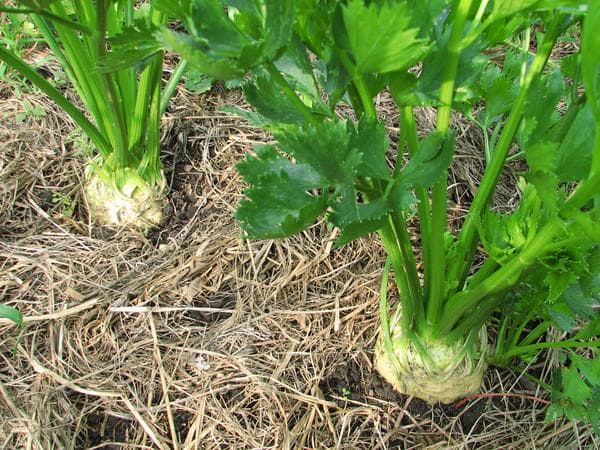
Top dressing
Root celery is usually fed as follows:
- At the beginning of growth (after planting seedlings in the ground), celery is better feed with complex fertilizers, in which there are all the necessary macronutrients (you can use various herbal infusions, infusions of chicken manure and mullein, nitroammofosk is suitable from mineral fertilizers).
- And when roots will begin to form it will take more potash-phosphorus fertilizers (for example one can use wood ash, potassium sulfate and superphosphate, potassium monophosphate).
Of course, if you initially carefully prepare the bed and make a really fertile and nutritious soil mixture, then you can do without additional fertilization.
Loosening, "loosening" and trimming the roots
After planting the seedlings and before the root crops begin to form, you should regularly carry out loosening row spacings after watering and rainsso that a hard earth crust does not form, while you do not you cannot huddle the plants themselves.
On the contrary - as it grows, when the root crop begins to thicken, you will need to start gradually free him from the ground (rake the ground), so to speak, "uncook" so that the top of the celery ends up above the soil surface.
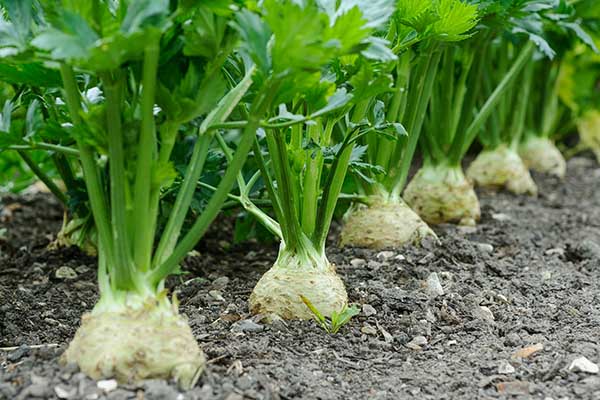
Also recommended trim side roots (be sure to use a sharp knife and be very careful not to damage the root crop) so that they do not grow to the sides, and the root crop does not branch out and grow "without a beard".
Removing leaves
After the root crop begins to form, it is worth starting to gradually remove (tear off) the lower leaves of the plant, which will turn slightly yellow and lie horizontally on the ground.
Important! You can remove no more than 2-3 leaves at a time.
Just don't touch the top standing leaves! At the end of the season (by the time of harvesting) there should be at least 6-8 of them.
What for?
By removing leaves nutrients will be directed specifically at the formation of the root crop, not green mass.
Advice! The cut side leaves can be used for food (like leaf celery).
When to Harvest and How to Store Root Celery Crop
Ripe root crops can be dug up and stored only in the fall - in September-October.
By the way! More about specific harvesting times and storage methods for celery read here.
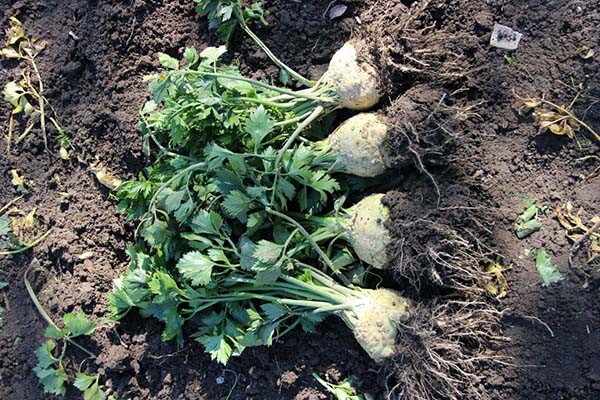
Well, if you follow these simple techniques for the care and cultivation of root celery, you will definitely get large, round, dense and juicy roots.
Video: how to grow root celery

